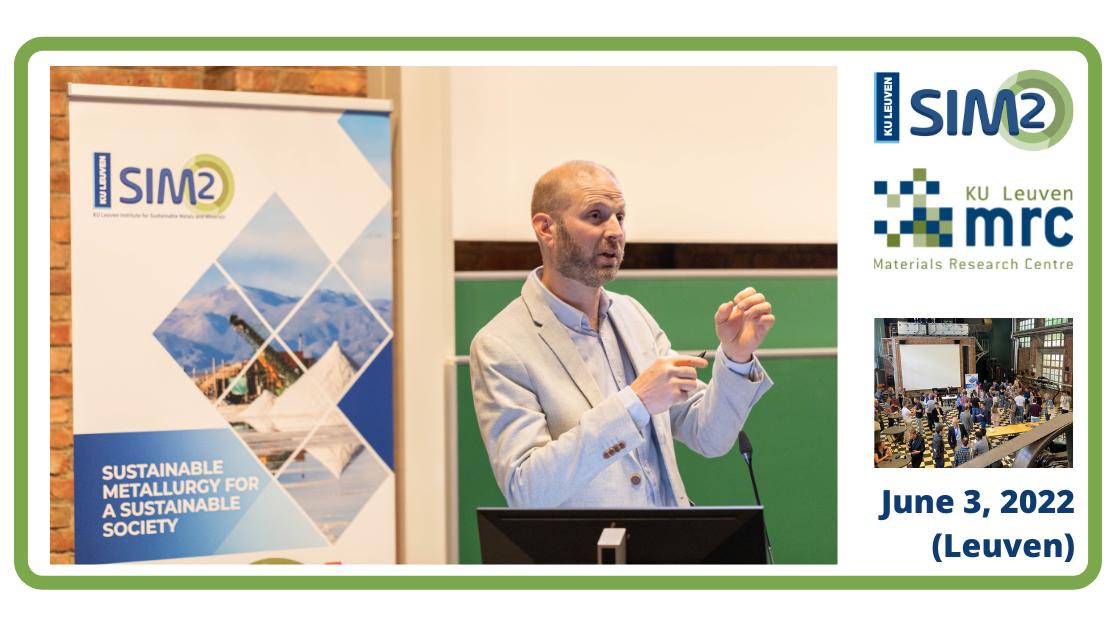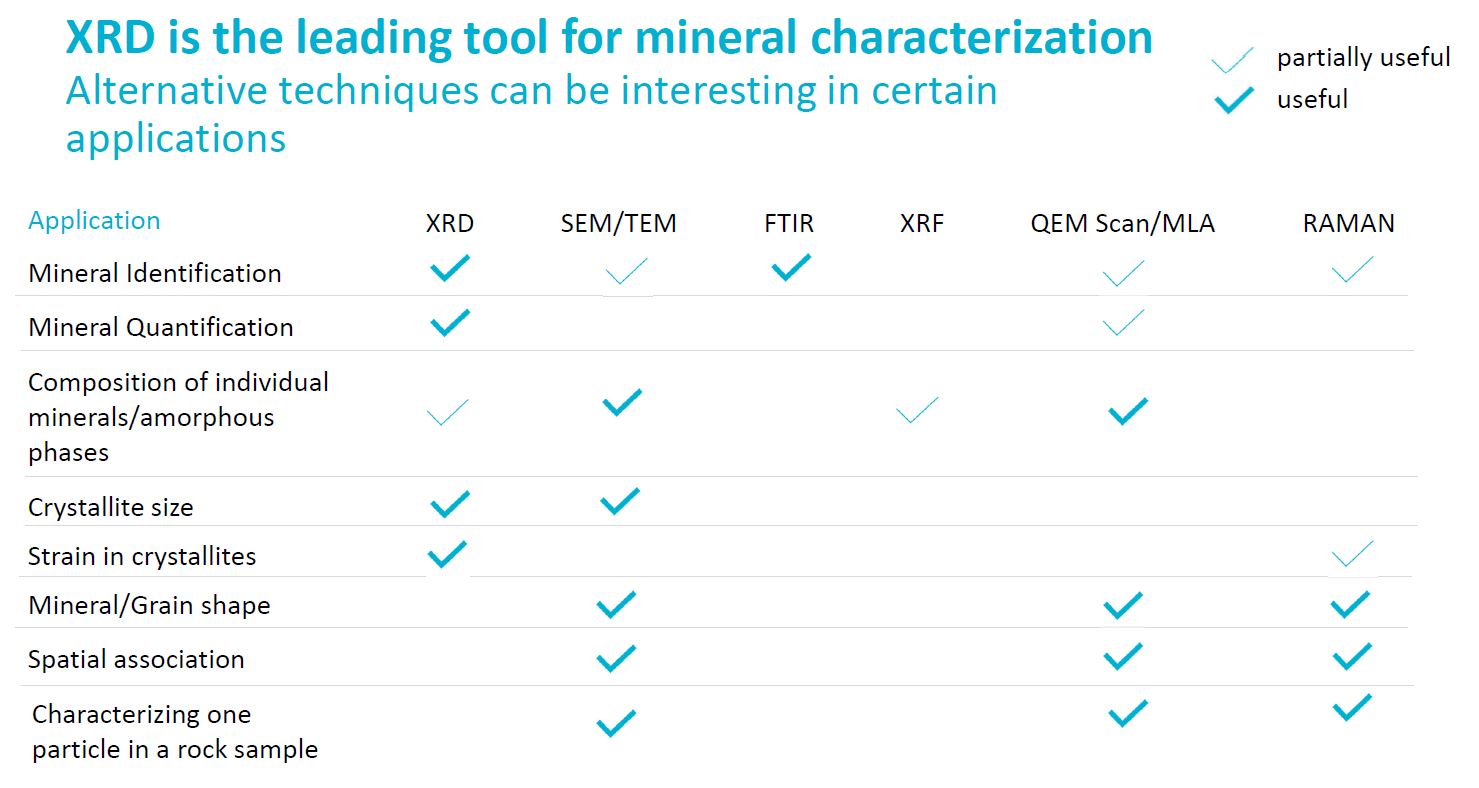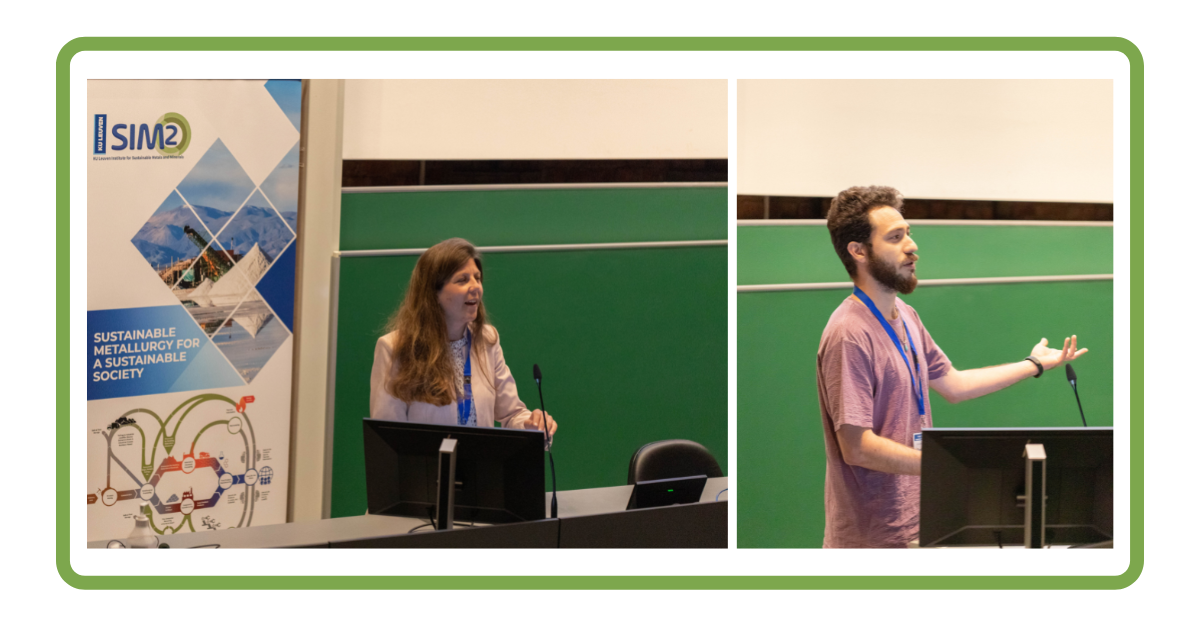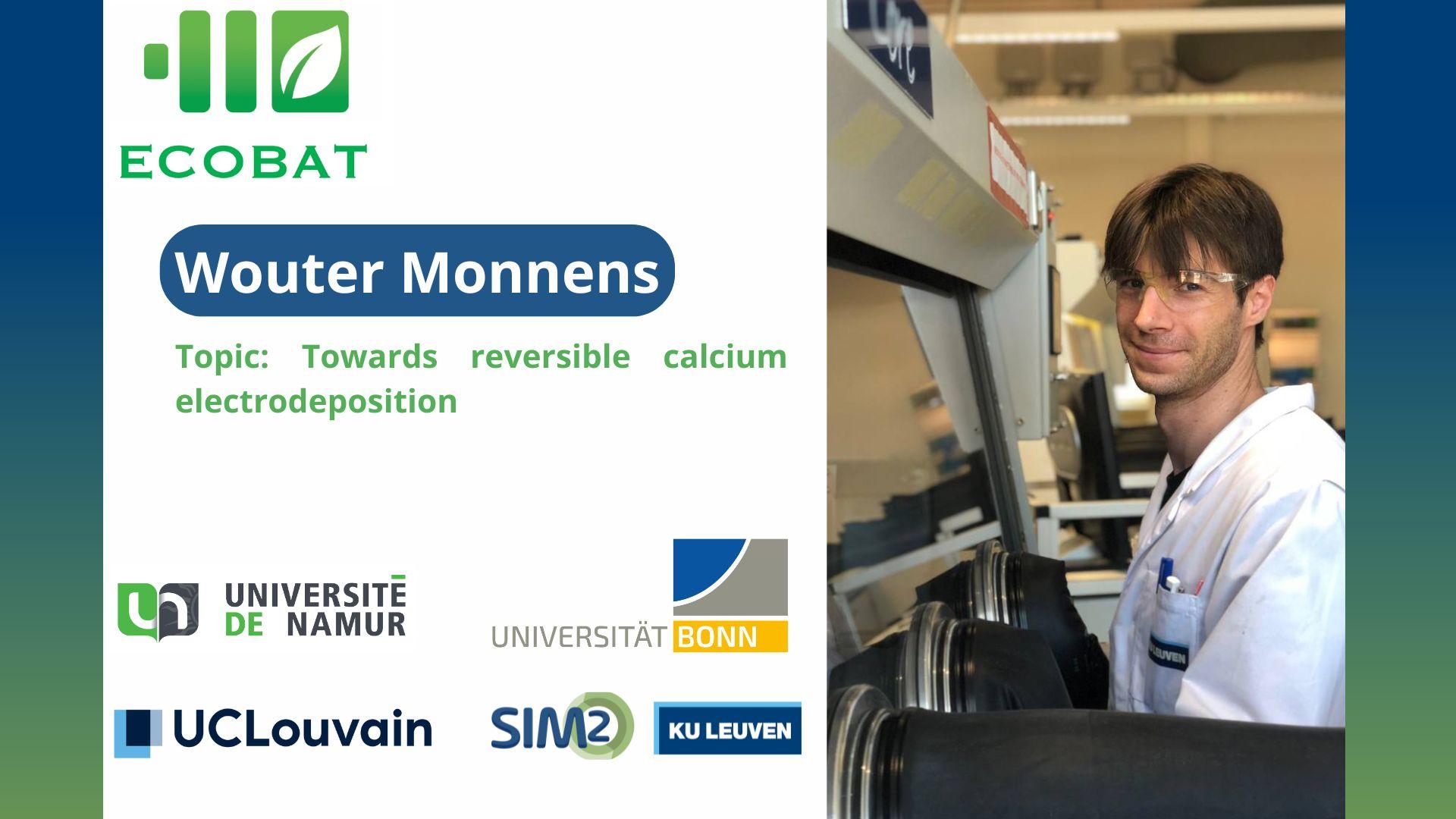On June 3, 2022, 85 SIM²/MRC KU Leuven members participated in the Joint Researcher Event “Pushing the boundaries of advanced materials characterisation”, where the pros and cons of techniques as diverse as QXRD, EPMA, Raman, LA-ICP-MS, APT and IBA were discussed. After two long years of COVID-drought, the event was a resounding success. A short report is provided here.
Face-to-face networking after two years of COVID drought
The goal of the event was to stimulate mutual interaction between the PhD researchers, junior postdocs and Research Experts/Managers that are active in SIM² KU Leuven and/or MRC KU Leuven, across the department/research group boundaries. After a two-year long COVID period, in which direct contacts between SIM²/MRC KU Leuven researchers were few and far between, this event offered a breath of fresh air and ample inspiration for future research activities.
The invited SIM²/MRC participants were offered the chance to present a poster about their work as a basis for discussion with fellow researchers. At the end of the event, a lively reception was offered, leading to many happy faces and new contacts. In the future, SIM² and MRC will be organising similar Joint Researcher Events, which will likely also be opened up to non-KU Leuven participants.
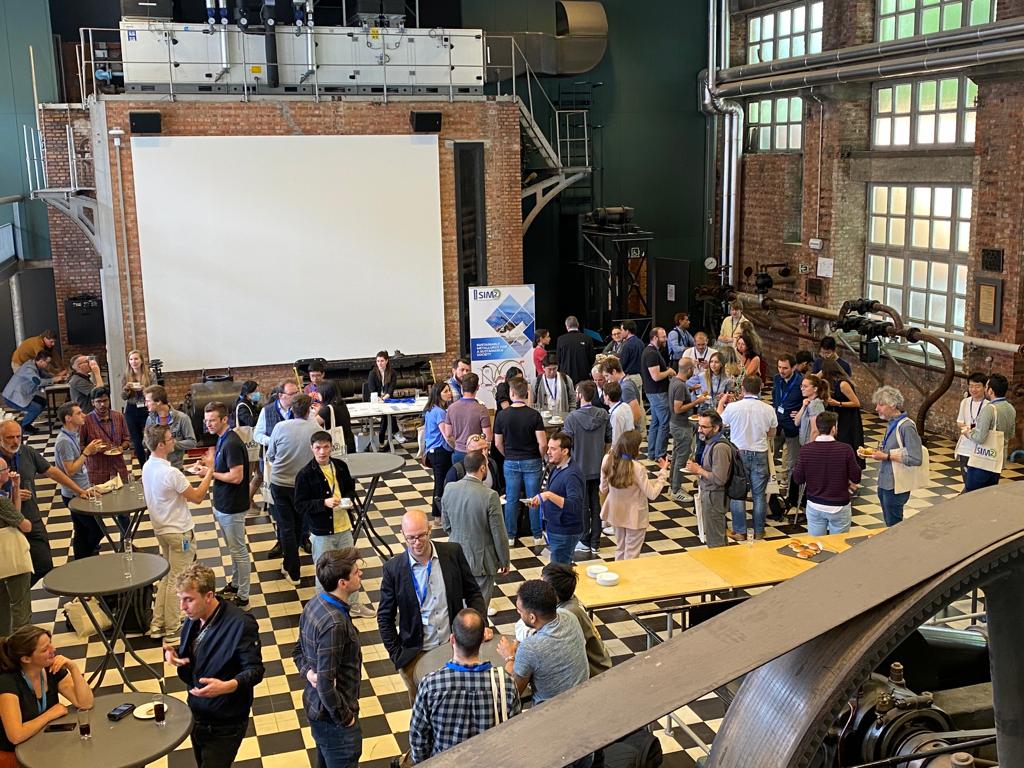
Photo: SIM²-MRC Joint Research Event June 3, 2022 – Networking moment "Machinezaal" (credits photo: RN)
About the organisers
The event was co-organised by MRC KU Leuven and SIM² KU Leuven. MRC is KU Leuven's interdisciplinary platform to develop innovative materials solutions for a sustainable future. Being a platform to initiate materials research activities with a challenge-driven, innovation-oriented or blue-sky perspective, MRC “provides a coordinative link between the member research groups and its external partners and stakeholders”, while strengthening their interactions. More information about MRC can be found in the opening presentation by Dr. Marion Bechtold (MRC Coordinator).
Concurrently, the event was organised by SIM² KU Leuven, the KU Leuven Institute for Sustainable Metals and Minerals, whose mission it is to contribute “to environmentally-friendly production & recycling of metals, minerals & engineered materials, supporting the transition to a climate-friendly, circular-economy.” Against the background of the Russian invasion of Ukraine and the disruption of key energy-transition metal supply chains, SIM²’s Director Peter Tom Jones highlighted the importance of SIM²’s work with respect to nickel and PGMs, as well as lithium, cobalt and REEs.
Presentations by internal and external experts
For the core part of the event, both internal and external expert speakers had been invited to provide a concise overview of the designated characterisation technique. The speakers were asked to covering the principles of the technique, the application domains, a SWOT analysis, one or two success stories/case-studies. From a practical point of view they ware also instructed to provide clear information for KU Leuven (& external) researchers on how to gain access to the equipment and/or how to get samples analysed (cost model, contact person, timing…).
Session 1: XRD, EPMA & Raman
The first technical presentation was provided by Dr. Gilles Mertens (Qmineral) (see featured image), who passionately made the case for quantitative XRD in his lecture “XRD: The most important mineral characterisation tool”. As a double World Cup-winner (Reynold Cup World Championship for Mineralogical Quantification), Dr. Mertens explained why he vehemently believes that XRD beats MLA et al. as the primary tool for mineralogical characterisation (see figure below).
Figure: Comparison XRD versus other techniques in view of mineral characterisation (reproduced from G. Mertens, June 3, 2022)
Subsequently, Dr. Annelies Malfliet (Department of Materials Engineering, SIM² KU Leuven) and Dr. Fernado Prado Araujo (Department of Earth and Environmental Sciences) showed the merits (and limitations) of, respectively, EPMA-WDS and Raman microscopy. From the resulting discussion it became clear again that a “horses for courses” approach is the wisest strategy in the domain of mineralogical (and elemental) characterisation. There is no silver-bullet technique available; a smart combination remains the best way forward.
Photos: SIM²-MRC Joint Research Event June 3, 2022 – Lectures by Annelies Malfliet (left), Fernando Prado Araujo (right) (credits photo: EDD)
Session 2: LA-ICP-MS, surface property characterisation, APT, IBA
In the second session, diverse techniques were covered by a total of four speakers. Prof. Erik Smolders (Department of Earth and Environmental Sciences, SIM² KU Leuven), who recently obtained his first ERC Advanced Grant, gave a great account of himself while presenting the wonderful opportunities of LA-ICP-MS. Subsequently, Prof. David Seveno (Department of Materials Engineering, MRC KU Leuven) covered a plethora of techniques to characterise surface properties.
Finally, Prof. André Vantomme (Department of Physics and Astronomy, MRC KU Leuven) and Prof. Claudia Fleischmann (Department of Physics and Astronomy, MRC KU Leuven & IMEC), ventured into the world of atoms, making a case for, respectively, Ion Beam Analysis (IBA) and Atom Probe Tomography (APT). Their passionate narratives did not go unnoticed.
.png) Photos: SIM²-MRC Joint Research Event June 3, 2022 – Lectures by Erik Smolders (left), André Vantomme (right) (credits photo: EDD)
Photos: SIM²-MRC Joint Research Event June 3, 2022 – Lectures by Erik Smolders (left), André Vantomme (right) (credits photo: EDD)
.png)
Photos: SIM²-MRC Joint Research Event June 3, 2022 – Lectures by David Seveno (left), Claudia Fleischmann (right) (credits photo: EDD)
All presentations available here
- Dr. Marion Bechtold (MRC)
- Dr. Peter Tom Jones (SIM²)
- Dr. Gilles Mertens (Qmineral) (XRD, the most important mineral characterisation tool)
- Dr. Annelies Malfliet (Electron Probe Micro Analysis)
- Dr. Fernando Prado Araujo (Shine on you crazy materials: Raman microscopy for advanced characterisation)
- Prof. Erik Smolders (LA-ICP-MS)
- Prof. David Seveno (Liquids and gases as probes to characterise surface properties)
- Prof. Claudia Fleischmann (Atom probe tomography: materials characterisation at the nanometer-scale) (pending clearance of copyright issues)
- Prof. André Vantomme (Ion beam analysis: a family of versatile techniques for materials characterisation)
.jpg)
Photo: SIM²-MRC Joint Research Event June 3, 2022 – Q&A session (credits photo: EDD)
Acknowledgements
Peter Tom Jones (SIM²) & Marion Bechtold (MRC) want to express their immense gratitude to Lucian Onisei, Giorgian Dinu, Rabab Nasser, Elisabeth De Decker, Lieven Machiels, Huberte Cloosen and the Alma team for the wonderful collaboration for this event. The credits for the photos are for Elisabeth De Decker (photos inside the auditorium) & Rabab Nasser (photo inside the hall)).



